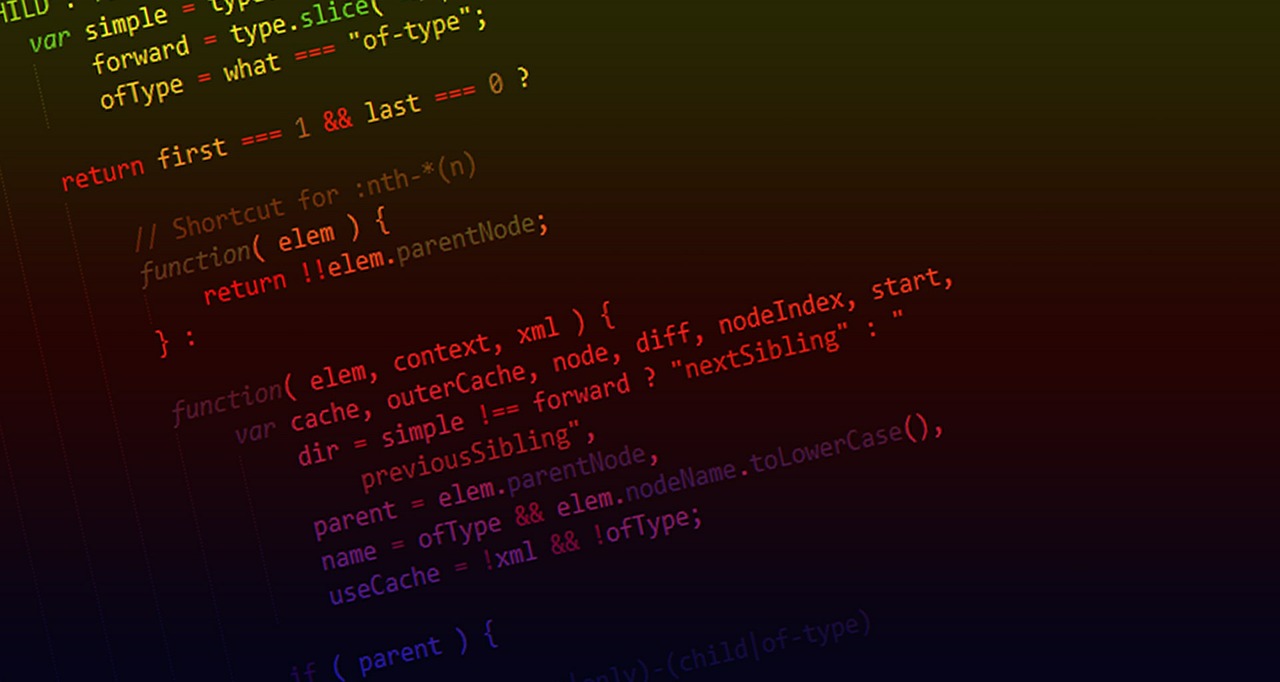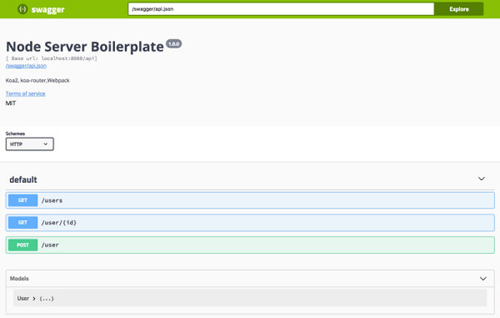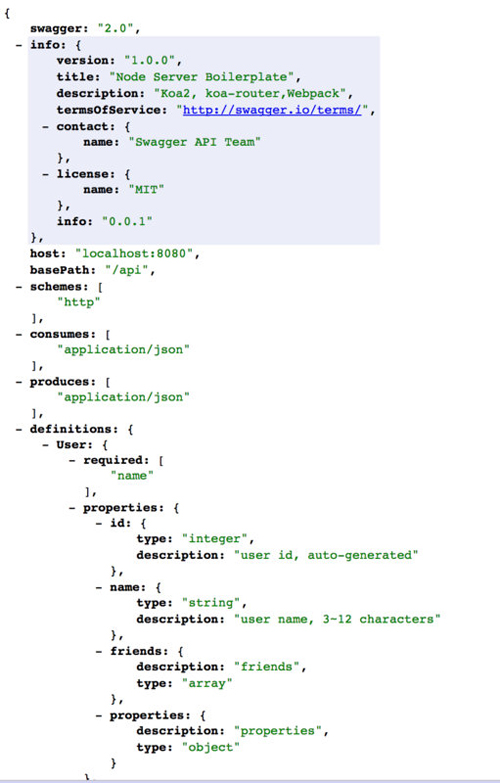JavaScript 中基于 swagger-decorator 的自动实体类构建与 Swagger 接口文档生成是笔者对于开源项目 swagger-decorator 的描述,对于不反感使用注解的项目中利用 swagger-decorator 添加合适的实体类或者接口类注解,从而实现支持嵌套地实体类校验与生成、Sequelize 等 ORM 模型生成、基于 Swagger 的接口文档生成等等功能。如果有对 JavaScript 语法使用尚存不明的可以参考 JavaScript 学习与实践资料索引或者现代 JavaScript 开发:语法基础与实践技巧系列文章。
swagger-decorator: 一处注解,多处使用
swagger-decorator 的初衷是为了简化 JavaScript 应用开发,笔者在编写 JavaScript 应用(Web 前端 & Node.js)时发现我们经常需要重复地创建实体类、添加注释或者进行类型校验,swagger-decorator 希望能够让开发者一处注解、多处使用。需要强调的是,在笔者多年的 Java 应用开发中也感受到,过多过度的注解反而会大大削弱代码的可读性,因此笔者也建议应该在合适的时候舒心地使用 swagger-decorator,而不是本末倒置,一味地追求注解覆盖率。swagger-decorator 已经可以用于实体类生成与校验、Sequelize ORM 实体类生成、面向 Koa 的路由注解与 Swagger 文档自动生成。我们可以使用 yarn 或者 npm 安装 swagger-decorator 依赖,需要注意的是,因为我们在开发中还会用到注解语法,因此还需要添加 babel-plugin-transform-decorators-legacy 插件以进行语法兼容转化。
- # 使用 npm 安装依赖
- $ npm install swagger-decorator -S
- $
- # 使用 yarn 安装依赖
- $ yarn add swagger-decorator
- $ yarn add babel-plugin-transform-decorators-legacy -D
- # 导入需要的工具函数
- import {
- wrappingKoaRouter,
- entityProperty,
- ...
- } from "swagger-decorator";
实体类注解
swagger-decorator 的核心 API 即是对于实体类的注解,该注解不会改变实体类的任何属性表现,只是会将注解限定的属性特性记录在内置的 innerEntityObject 单例中以供后用。属性注解 entityProperty 的方法说明如下:
- /**
- * Description 创建某个属性的描述
- * @param type 基础类型 self - 表示为自身
- * @param description 描述
- * @param required 是否为必要参数
- * @param defaultValue 默认值
- * @param pattern
- * @param primaryKey 是否为主键
- * @returns {Function}
- */
- export function entityProperty({
- // 生成接口文档需要的参数
- type = "string",
- description = "",
- required = false,
- defaultValue = undefined,
- // 进行校验所需要的参数
- pattern = undefined,
- // 进行数据库连接需要的参数
- primaryKey = false
- }) {}
简单的用户实体类注解如下,这里的数据类型 type 支持 Swagger 默认的字符格式的类型描述,也支持直接使用 JavaScript 类名或者 JavaScript 数组。
- // @flow
- import { entityProperty } from "../../src/entity/decorator";
- import UserProperty from "./UserProperty";
- /**
- * Description 用户实体类
- */
- export default class User {
- // 编号
- @entityProperty({
- type: "integer",
- description: "user id, auto-generated",
- required: true
- })
- id: string = 0;
- // 姓名
- @entityProperty({
- type: "string",
- description: "user name, 3~12 characters",
- required: false
- })
- name: string = "name";
- // 邮箱
- @entityProperty({
- type: "string",
- description: "user email",
- pattern: "email",
- required: false
- })
- email: string = "email";
- // 属性
- @entityProperty({
- type: UserProperty,
- description: "user property",
- required: false
- })
- property: UserProperty = new UserProperty();
- }
- export default class UserProperty {
- // 朋友列表
- @entityProperty({
- type: ["number"],
- description: "user friends, which is user ids",
- required: false
- })
- friends: [number];
- }
Swagger 内置数据类型定义:
Common NametypeformatCommentsintegerintegerint32signed 32 bitslongintegerint64signed 64 bitsfloatnumberfloatdoublenumberdoublestringstringbytestringbytebase64 encoded charactersbinarystringbinaryany sequence of octetsbooleanbooleandatestringdateAs defined by full-date - RFC3339dateTimestringdate-timeAs defined by date-time - RFC3339passwordstringpasswordUsed to hint UIs the input needs to be obscured.
实例生成与校验
实体类定义完毕之后,我们首先可以使用 instantiate 函数为实体类生成实例;不同于直接使用 new 关键字创建,instantiate 能够根据指定属性的数据类型或者格式进行校验,同时能够迭代生成嵌套地子对象。
- /**
- * Description 从实体类中生成对象,并且进行数据校验;注意,这里会进行递归生成,即对实体类对象同样进行生成
- * @param EntityClass 实体类
- * @param data 数据对象
- * @param ignore 是否忽略校验
- * @param strict 是否忽略非预定义类属性
- * @throws 当校验失败,会抛出异常
- */
- export function instantiate(
- EntityClass: Function,
- data: {
- [string]: any
- },
- { ignore = false, strict = true }: { ignore: boolean, strict: boolean } = {}
- ): Object {}
这里为了方便描述使用 Jest 测试用例说明不同的使用场景:
- /**
- * Description 从实体类中生成对象,并且进行数据校验;注意,这里会进行递归生成,即对实体类对象同样进行生成
- * @param EntityClass 实体类
- * @param data 数据对象
- * @param ignore 是否忽略校验
- * @param strict 是否忽略非预定义类属性
- * @throws 当校验失败,会抛出异常
- */
- export function instantiate(
- EntityClass: Function,
- data: {
- [string]: any
- },
- { ignore = false, strict = true }: { ignore: boolean, strict: boolean } = {}
- ): Object {}
- 这里为了方便描述使用 Jest 测试用例说明不同的使用场景:
- describe("测试实体类实例化函数", () => {
- test("测试 User 类实例化校验", () => {
- expect(() => {
- instantiate(User, {
- name: "name"
- }).toThrowError(/validate fail!/);
- });
- let user = instantiate(User, {
- id: 0,
- name: "name",
- email: "a@q.com"
- });
- // 判断是否为 User 实例
- expect(user).toBeInstanceOf(User);
- });
- test("测试 ignore 参数可以允许忽略校验", () => {
- instantiate(
- User,
- {
- name: "name"
- },
- {
- ignore: true
- }
- );
- });
- test("测试 strict 参数可以控制是否忽略额外参数", () => {
- let user = instantiate(
- User,
- {
- name: "name",
- external: "external"
- },
- {
- ignore: true,
- strict: true
- }
- );
- expect(user).not.toHaveProperty("external", "external");
- user = instantiate(
- User,
- {
- name: "name",
- external: "external"
- },
- {
- ignore: true,
- strict: false
- }
- );
- expect(user).toHaveProperty("external", "external");
- });
- });
- describe("测试嵌套实例生成", () => {
- test("测试可以递归生成嵌套实体类", () => {
- let user = instantiate(User, {
- id: 0,
- property: {
- friends: [0]
- }
- });
- expect(user.property).toBeInstanceOf(UserProperty);
- });
- });
Sequelize 模型生成
Sequelize 是 Node.js 应用中常用的 ORM 框架,swagger-decorator 提供了 generateSequelizeModel 函数以方便从实体类中利用现有的信息生成 Sequelize 对象模型;generateSequelizeModel 的第一个参数输入实体类,第二个参数输入需要覆写的模型属性,第三个参数设置额外属性,譬如是否需要将驼峰命名转化为下划线命名等等。
- const originUserSequelizeModel = generateSequelizeModel(
- User,
- {
- _id: {
- primaryKey: true
- }
- },
- {
- mappingCamelCaseToUnderScore: true
- }
- );
- const UserSequelizeModel = sequelize.define(
- "b_user",
- originUserSequelizeModel,
- {
- timestamps: false,
- underscored: true,
- freezeTableName: true
- }
- );
- UserSequelizeModel.findAll({
- attributes: { exclude: [] }
- }).then(users => {
- console.log(users);
- });
从 Flow 类型声明中自动生成注解
笔者习惯使用 Flow 作为 JavaScript 的静态类型检测工具,因此笔者添加了 flowToDecorator 函数以自动地从 Flow 声明的类文件中提取出类型信息;内部原理参考现代 JavaScript 开发:语法基础与实践技巧 一书中的 JavaScript 语法树与代码转化章节。该函数的使用方式为:
- // @flow
- import { flowToDecorator } from '../../../../src/transform/entity/flow/flow';
- test('测试从 Flow 中提取出数据类型并且转化为 Swagger 接口类', () => {
- flowToDecorator('./TestEntity.js', './TestEntity.transformed.js').then(
- codeStr => {
- console.log(codeStr);
- },
- err => {
- console.error(err);
- }
- );
- });
这里对应的 TestEntity 为:
- // @flow
- import AnotherEntity from "./AnotherEntity";
- class Entity {
- // Comment
- stringProperty: string = 0;
- classProperty: Entity = null;
- rawProperty;
- @entityProperty({
- type: "string",
- description: "this is property description",
- required: true
- })
- decoratedProperty;
- }
转化后的实体类为:
- // @flow
- import { entityProperty } from 'swagger-decorator';
- import AnotherEntity from './AnotherEntity';
- class Entity {
- // Comment
- @entityProperty({
- type: 'string',
- required: false,
- description: 'Comment'
- })
- stringProperty: string = 0;
- @entityProperty({
- type: Entity,
- required: false
- })
- classProperty: Entity = null;
- @entityProperty({
- type: 'string',
- required: false
- })
- rawProperty;
- @entityProperty({
- type: 'string',
- description: 'this is property description',
- required: true
- })
- decoratedProperty;
- }
接口注解与 Swagger 文档生成
对于 Swagger 文档规范可以参考 OpenAPI Specification ,而对于 swagger-decorator 的实际使用可以参考本项目的使用示例或者 基于 Koa2 的 Node.js 应用模板 。
封装路由对象
- import { wrappingKoaRouter } from "swagger-decorator";
- ...
- const Router = require("koa-router");
- const router = new Router();
- wrappingKoaRouter(router, "localhost:8080", "/api", {
- title: "Node Server Boilerplate",
- version: "0.0.1",
- description: "Koa2, koa-router,Webpack"
- });
- // define default route
- router.get("/", async function(ctx, next) {
- ctx.body = { msg: "Node Server Boilerplate" };
- });
- // use scan to auto add method in class
- router.scan(UserController);
定义接口类
- export default class UserController extends UserControllerDoc {
- @apiRequestMapping("get", "/users")
- @apiDescription("get all users list")
- static async getUsers(ctx, next): [User] {
- ctx.body = [new User()];
- }
- @apiRequestMapping("get", "/user/:id")
- @apiDescription("get user object by id, only access self or friends")
- static async getUserByID(ctx, next): User {
- ctx.body = new User();
- }
- @apiRequestMapping("post", "/user")
- @apiDescription("create new user")
- static async postUser(): number {
- ctx.body = {
- statusCode: 200
- };
- }
- }
在 UserController 中是负责具体的业务实现,为了避免过多的注解文档对于代码可读性的干扰,笔者建议是将除了路径与描述之外的信息放置到父类中声明;swagger-decorator 会自动从某个接口类的直接父类中提取出同名方法的描述文档。
- export default class UserControllerDoc {
- @apiResponse(200, "get users successfully", [User])
- static async getUsers(ctx, next): [User] {}
- @pathParameter({
- name: "id",
- description: "user id",
- type: "integer",
- defaultValue: 1
- })
- @queryParameter({
- name: "tags",
- description: "user tags, for filtering users",
- required: false,
- type: "array",
- items: ["string"]
- })
- @apiResponse(200, "get user successfully", User)
- static async getUserByID(ctx, next): User {}
- @bodyParameter({
- name: "user",
- description: "the new user object, must include user name",
- required: true,
- schema: User
- })
- @apiResponse(200, "create new user successfully", {
- statusCode: 200
- })
- static async postUser(): number {}
- }
运行应用
- run your application and open swagger docs (PS. swagger-decorator contains Swagger UI):
- /swagger
- /swagger/api.json
【本文是51CTO专栏作者“张梓雄 ”的原创文章,如需转载请通过51CTO与作者联系】








































